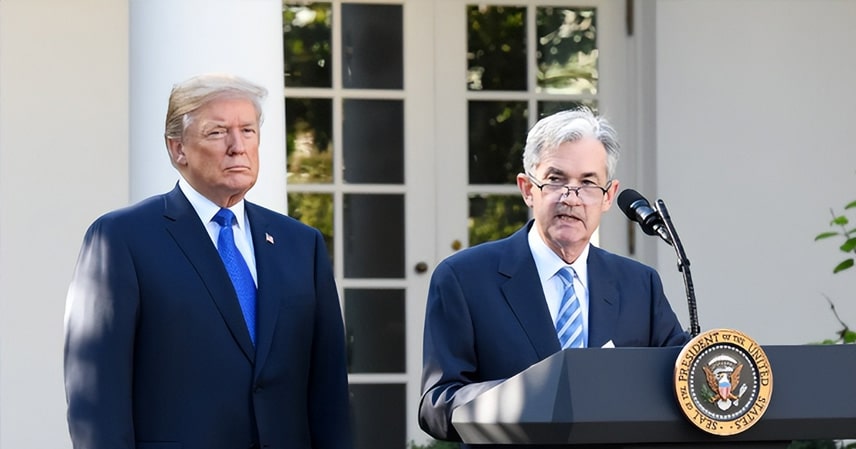The U.S. debt crisis has reached a staggering $37.4 trillion, with over $30 trillion held by the public and another $7 trillion owed internally. What once looked like fiscal dominance now resembles a mountain of liabilities threatening the U.S. economy.
By 2025, interest payments alone swallowed 17% of the federal budget, amounting to $921 billion in 2024 and climbing further in early 2025. These payments crowd out funding for other priorities. Starting at $33 trillion in late 2024, the debt jumped past $36 trillion in just months—driven by chronic budget deficits, weak tax revenues, and ever-expanding expenditures.
Former President Trump, now back in office, attempted sweeping reforms but instead deepened the crisis. His tax cuts widened the fiscal gap, adding an estimated $22 trillion in debt over ten years. Congress was locked in bitter battles over the debt ceiling, nearly forcing a government shutdown in summer 2025.
Attempts at spending cuts failed. Military budgets and entitlement programs remain politically untouchable, while lobbying from powerful groups ensured the “Efficiency Commission” became symbolic. Debt-to-GDP surged from 94% to 117%, with economists warning it shaved 0.5 percentage points off U.S. growth by crowding out private investment.
Behind the façade of prosperity, the U.S. faces structural imbalances: exploding debt service, constrained public services, weaker private investment, and slower innovation. By July 2025, the federal deficit hit $289 billion, $45 billion higher than the same period a year earlier. Global reports confirm a slowdown in trade, with East Asia-Pacific growth falling to 4.5%.
Trump’s “Great America Act” aimed at budget rebalancing but proved ineffective. High interest rates from the Federal Reserve further restricted business borrowing. While tax cuts briefly lifted stock markets, the long-term burden of debt and spiraling interest payments grew heavier. Nobel laureate Joseph Stiglitz warned that excessive borrowing erodes investment, while the Fed—now holding over $7.5 trillion in Treasuries—has become the largest creditor.
The Tariff War with China
Facing unfixable deficits, Trump shifted to trade. On February 4, 2025, he imposed a 10% tariff on all Chinese imports. By April 2, he expanded it into a universal 10% tariff on imports from all countries, while subjecting Chinese goods to even harsher penalties.
China retaliated swiftly. On April 9, Beijing launched 84% retaliatory tariffs, targeting U.S. agricultural products, meat, and dairy. Trump escalated with 20% hikes in May, threatening up to 70% tariffs on Chinese high-tech chips. Yet Chinese companies adapted, redirecting supply chains to Southeast Asia and alternative markets. Meanwhile, U.S. farmers faced warehouse surpluses and collapsing exports.
By July, Beijing signaled readiness for a long-term trade war, expanding tariffs and doubling down on domestic consumption and tech self-sufficiency. Allies like the EU and Japan remained lukewarm, while emerging economies like Vietnam profited from supply chain realignments.
Trump alternated between escalation and partial retreat—rolling back some tariffs in May—but the trade deficit persisted. Inflation rose, GDP slowed, and tensions with the Federal Reserve deepened.
Trump vs. The Federal Reserve
Trump openly clashed with the Fed, America’s largest bondholder. On April 8, he accused Fed Chair Jerome Powell of political bias. On April 18, he issued an executive order pulling securities oversight into the White House, threatening Fed independence.
By July 16, Trump used overspending on Fed building renovations to charge Powell with misconduct, moving toward dismissal. On August 26, he fired Fed Governor Lisa Cook. On September 18, the administration appealed to the Supreme Court to allow removal of Fed officials—directly challenging the institution’s autonomy.
Despite the pressure, the Fed held firm. Powell refused to yield, defending the central bank’s independence. Trump’s tariff gambit thus turned into a prolonged stalemate, while his attempts to control monetary policy became a political spectacle closely followed by global media.
Stalemate and Consequences
By late summer 2025, the trade war had devolved into a costly deadlock. U.S. exporters faced stockpiles, farmers grew desperate, and businesses complained at chamber meetings. China, meanwhile, expanded domestic demand and accelerated innovation, weathering U.S. tariffs with strategic patience.
Allies distanced themselves, and emerging markets seized opportunities. The Fed’s resilience left Trump’s intervention plans in ruins. With debt still mounting, interest payments squeezed hospitals, infrastructure, and public services, while private investors turned cautious.
By August, the U.S. deficit hit $345 billion in a single month. Welfare spending and military commitments remained untouchable. Trump’s tax cuts offered temporary stock market booms but left a heavier long-term debt load.
Looking ahead, the risks are stark: rising debt, mounting interest, restricted innovation, and potential cracks in dollar dominance. In contrast, China doubled down on supply chain resilience, multilateral trade, and technological independence, showing strategic steadiness in a prolonged standoff.



